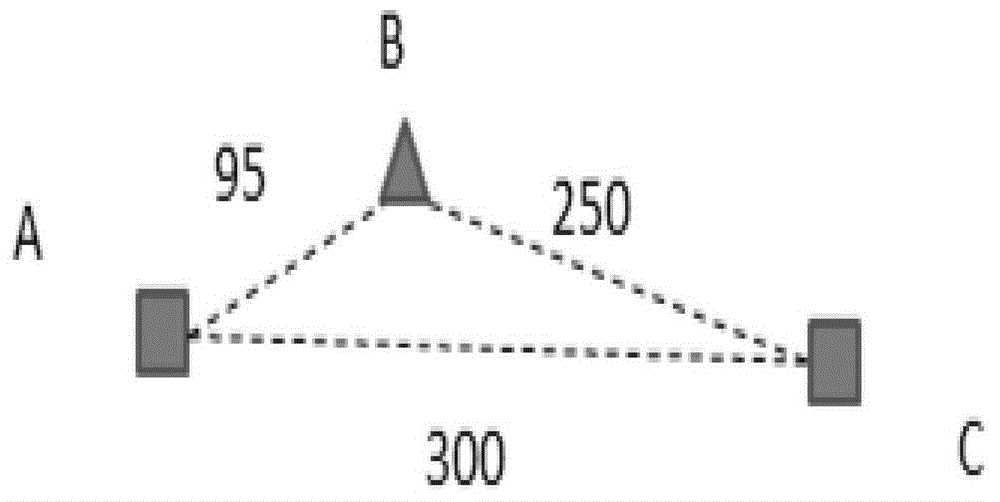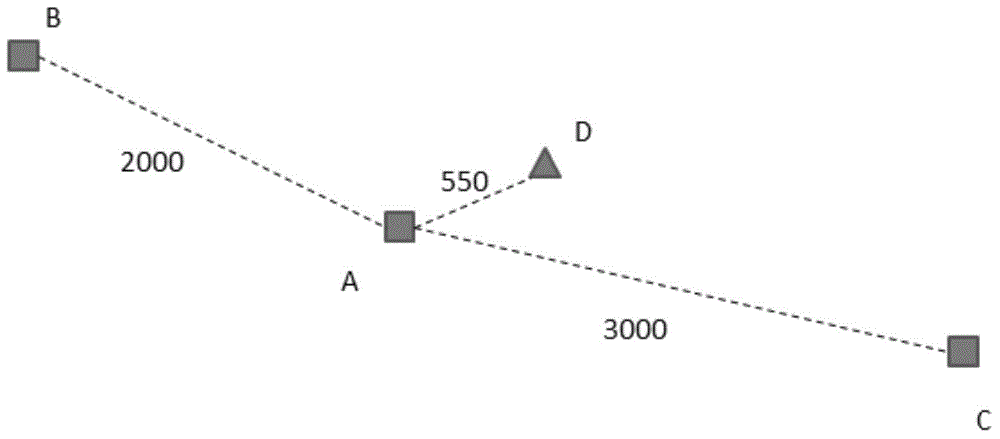Base station co-construction and sharing planning method
A base station and planning technology, applied in network planning, electrical components, wireless communication, etc., to improve the co-construction and sharing rate, reduce duplication of construction, and improve work efficiency
- Summary
- Abstract
- Description
- Claims
- Application Information
AI Technical Summary
Problems solved by technology
Method used
Image
Examples
Embodiment 1
[0059] image 3 The base station co-construction and sharing planning method in Aiming at three operators coexisting in a certain area, it includes the following steps:
[0060] Enter the distribution of base station sites of all operators in the area, including: the operator's site name, station type, longitude, latitude and other information about the operator's base station site;
[0061] Input the co-site degree threshold of any base station site;
[0062] The operators are arranged in order as A, B, and C, and one operator is selected as the operator to be merged, and the remaining operators are the candidates for the operator to be merged, that is, operator A is the operator to be merged , operators B and C are the alternative operators; when B is the operator to be merged, operators A and C are the alternative operators; when operator C is the operator to be merged, operators A and B are the candidates operator;
[0063] The base station of the operator to be merged ...
Embodiment 2
[0118] In the planning process, based on the method of co-site degree in Embodiment 1 to judge whether the existing base stations can co-site, if the potential needs of each operator can be found out, it will have a great impact on the future planning of the operator and the tower company. The integrated construction has a positive effect, so the base station co-construction and sharing planning method in this embodiment further adds a potential demand method on the basis of the co-site degree method in embodiment 1.
[0119] Such as Figure 11 The base station co-construction and sharing planning method in , combined with the method in embodiment 1 image 3 The steps shown include the following steps:
[0120] Enter the distribution of base station sites of all operators in the area, including: the operator's site name, station type, longitude, latitude and other information about the operator's base station site;
[0121] Input the co-site degree threshold of any base stat...
Embodiment 3
[0147] In above-mentioned embodiment 1 and embodiment 2, input the station name, station class, longitude, latitude and co-site degree threshold of all operators, can be in the tabular form as in table 1, can come with array or class in software program Realization, A1 to A13 in the table are all base stations of operator A, and B1 to B7 are all base stations of operator B. For each operator in Table 1, the station number, Station type, location information and co-station threshold, but the content is not limited to this, you can add information that needs to be entered or delete unnecessary information, such as station number, as needed.
[0148] The station categories are divided into three categories: A, B, and C. Among them, category A represents sites that can be shared or can be shared after transformation among existing sites, category B is non-shareable sites, and category C is newly-built sites. When integrating and outputting the co-sited results of operators in pair...
PUM
 Login to View More
Login to View More Abstract
Description
Claims
Application Information
 Login to View More
Login to View More - R&D
- Intellectual Property
- Life Sciences
- Materials
- Tech Scout
- Unparalleled Data Quality
- Higher Quality Content
- 60% Fewer Hallucinations
Browse by: Latest US Patents, China's latest patents, Technical Efficacy Thesaurus, Application Domain, Technology Topic, Popular Technical Reports.
© 2025 PatSnap. All rights reserved.Legal|Privacy policy|Modern Slavery Act Transparency Statement|Sitemap|About US| Contact US: help@patsnap.com



